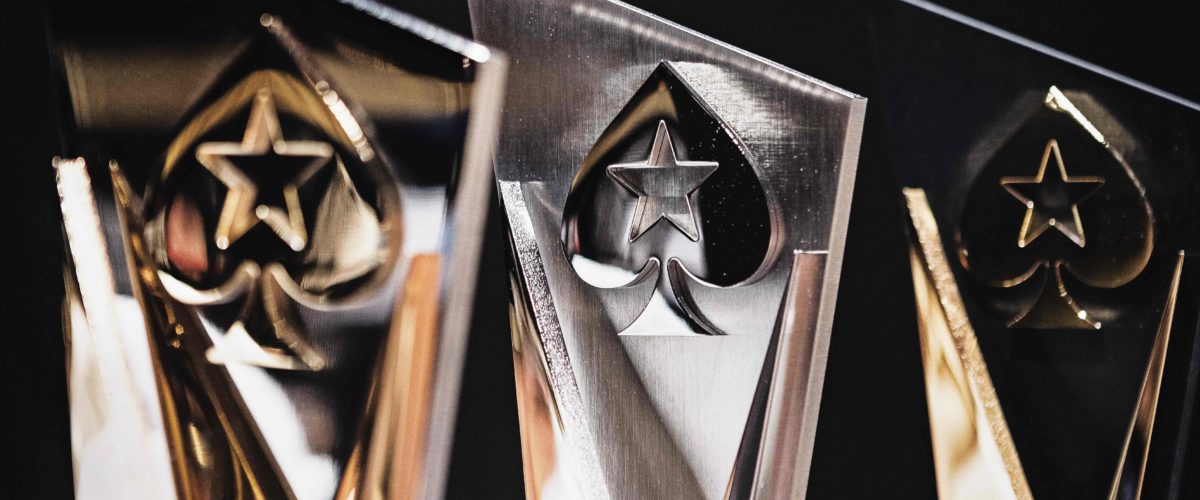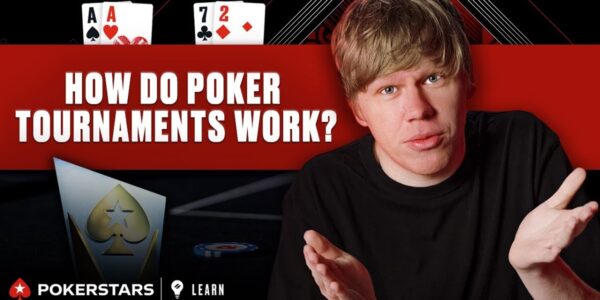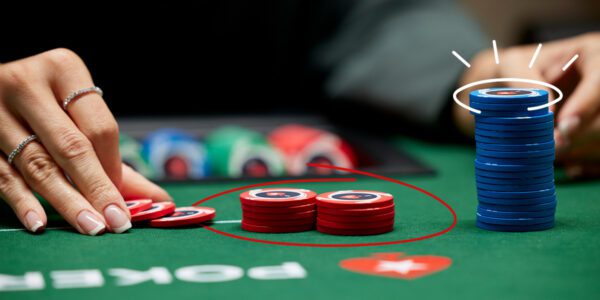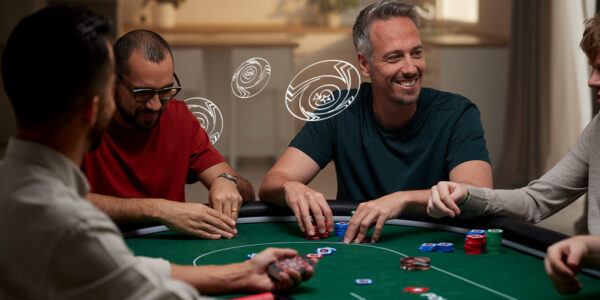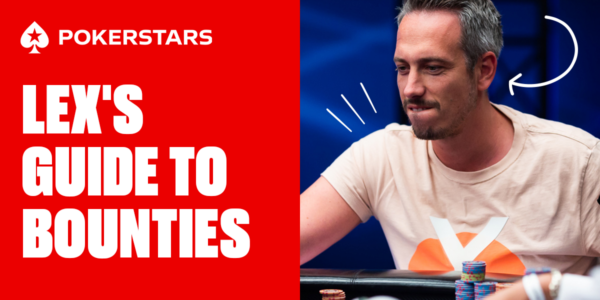How to Satellite into High Stakes Tournaments
I’ve done articles on satellite strategy for the PokerStars School before. There are articles published with general strategy tips for Sunday Million satellites, and for approaching satellites to live events. In today’s article we’re going to talk about satellites to high stakes tournaments, highlighting some ways they may be different from satellites to smaller events.
Remember, our goal in a satellite is far different from our goal in a regular tournament. In tournaments, ultimately we are trying to win the event – in satellites, there is no first place winner (with the exception of satellites awarding 1 seat only). In satellites awarding multiple seats to the target event, the goal is simply to survive long enough to get to the seats. Since survival takes on the largest importance, our strategies throughout the satellite should reflect that.
We’ve talked in previous articles about early and middle stage strategy in satellites, as well as approaching the ticket bubble. The same strategies apply in satellites to high stakes tournaments. What will be different is the field… we can expect the field to be more saturated with good players than a micro buy in satty to a $55 or $109 for example. This can work to our advantage in the late stages of the satellite, as I will explain shortly.


First of all, let’s build on early and middle stage strategy. As discussed in previous articles, these stages are all about chip accumulation and maximizing chip EV in your decisions. The seats are a long way off and we don’t really have any ICM implications. How many chips is our target to accumulate?
Estimating Target Stack Size for Satellites
Knowing what sort of stack size you’re accumulating towards during the early and middle stages is valuable, and it’s also information that is readily accessible, yet many players will have simply no idea what that number is leading them to poor strategy and gross ICM mistakes. As a general guideline, roughly 80% of the average stack is a reasonable target. This is easy to calculate – simply take the total number of chips in play, and divide by however many seats the satellite is awarding.
An easy way to do this mid-game is to take the average stack and multiply by the number of players remaining (both data points that are available in the satellite lobby online, or on the tournament info display at most live events) to get your total chips in play. Then divide by the seats.
So for example if a satellite is awarding 15 seats, there are currently 89 players remaining and the average stack is 12,288. 12,288 * 89 = 1,093,632 chips in play. Divided by 15 seats = 72,909 would be the average stack with 15 left. 80% of that is 58,327. So while our stack is below 58K we’re still looking to accumulate. The closer we get to this “target stack size”, the less we should be looking to take close spots with high risk.
Understanding the Field
The difference between a satellite to a high stakes tournament and the lower buy-in games is the quality of the field. While there will still be recreational players and soft spots, the field will also include many professionals and tournament crushers. Players who could otherwise enter directly will be looking to play satellites to high stakes events in an effort to get in at a discount, plus for the value they offer with some poorer players in the mix.
Let’s build on strategies we discussed in previous articles to include how we might adjust in this particular pool of more shark infested waters, and why this isn’t necessarily a bad thing for us in these satellites.
Early/Mid-Stage Chip Accumulation
First, identifying the weaker players at your table is important. There will be a fight over who gets to play pots with these folks. Once you know who they are, you can enter the fray with raises or 3-bets attempting to isolate these weaker players with your decent playable hands, more often cornering the market on the vast array of mistakes they’ll make and chips they’ll spew.
If you simply fold all but your premiums and sit in a shell scared to get in the mix, the pros at your table will gladly tangle with the weaker players while you blind down. Don’t let them have all the fun.
Second, look for pros to target. Yes, I meant that. Pros may be winning players but they are still bound by the ranges they choose just like everyone else. Sometimes pros can have a tendency to play more hands in the early stages, usually opening much more frequently and wider than optimal. Even more so when their ego gets involved… “I’m better than these players, I can play more hands, push them around, etc.”.
This strategy will work if no one challenges them. When you see someone opening A7o from under the gun, or 76o from MP, you’ve got a new target. They may be a pro, but they are opening ranges that are too wide to defend properly against 3-bets, so widen your 3B ranges against their opens. Not only will you be putting them in more bad spots, but they will also likely react more cautiously than they might in the actual target event. The same ego that perceives they can open all kinds of random junk and run over everyone, will also be telling them what a big favorite they are in this satellite field, so they don’t want to punt the game away with 76o in the early stages.
End Game/Satellite Bubble
This is the stage where playing against strong, knowledgeable players can really help us make bank. These players understand the ICM of a satellite bubble and how insanely tight they must be against shoves when they
a) have a stack that will earn a ticket a very high percentage of the time,
b) would grossly compromise this virtual sure thing by calling and losing the hand.
There are stack situations where they should correctly fold AA to a shove. Your weaker opponents will never fold this tight, but the strong players who are in the know will. This creates spots where you can shove crazy wide into them to pick up chips during the impending bubble.
Taking our 15 seat example from the target stack size section above, let’s say there are 16 players left and we are on the direct bubble. Blinds are 2.5K-5K and we are in the small blind with 27K when it folds to us. The big blind is a pro and has 29K chips. There are stacks at our table of 7.3K and 10.2K, and a stack on the other table of 12K.
Although most people simply fold in our spot, this is a scenario where we can actually shove and the pro simply won’t call us. They understand if they call with a big hand and get unlucky, they will be the short and blinded all in on their small blind the very next hand. If they fold however, they’ll have at the very least 3 other players who will be forced all in and at risk long before they would be.
We could use that same logic and fold our SB, and this may not be the perfect example I just made off the top of my head, but it’s better to shove here if the BB is a pro. If the three shorter stacks get lucky and all double, our stacks (us and the pros) are now coming into the danger zone. The difference here is for us, we are shoving and the pro understanding all of the above, will have to fold virtually everything and actually be capable of folding premiums. So we expect to pick up these blinds and antes without a fight pretty much all the time – thus *our* stack is actually almost never (maybe truly never) at risk.
But if the pro calls us off, their stack is at risk 100% of the time now as well as the seat they virtually lock up by just folding. If the pro were instead one of the weak players, we can’t shove super wide and count on them to fold a hand like AQo or TT even though from an ICM perspective those may be crystal clear folds and calling them off is a massive punt of equity. But the pros understand these concepts and will be forced to allow your shove through (and they might then do the same to stacks on their left should the same situation arise for them).
Ultimately, satellites to high stakes tournaments progress just like lower stake satellites, the primary difference being the quality of the field in general, and particularly nearing the bubble where most of the remaining players will be stronger, more knowledgeable players. Look for spots to exploit them early when they are getting too bold with their ranges, and late when you can apply massive ICM pressure on them, and you’ll punch that ticket to the target event more often!


